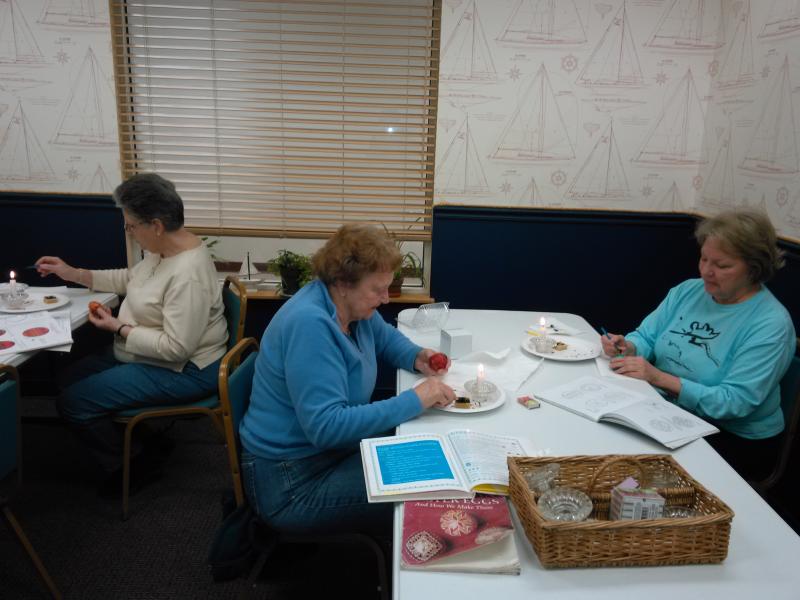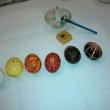Ukrainian egg decoration continues ancient tradition
 From egg to pysanky. These eggs show the steps in the process of making Ukrainian decorated eggs. Also pictured are the beeswax and stylus. JANE CARPENTER/Boothbay Register
From egg to pysanky. These eggs show the steps in the process of making Ukrainian decorated eggs. Also pictured are the beeswax and stylus. JANE CARPENTER/Boothbay Register
 Pysanky artists. Local residents (from left) Betty Sullivan, Donna Morey and Jody Kramer decorate eggs at a Community Center class. JANE CARPENTER/Boothbay Register.
Pysanky artists. Local residents (from left) Betty Sullivan, Donna Morey and Jody Kramer decorate eggs at a Community Center class. JANE CARPENTER/Boothbay Register.
 From egg to pysanky. These eggs show the steps in the process of making Ukrainian decorated eggs. Also pictured are the beeswax and stylus. JANE CARPENTER/Boothbay Register
From egg to pysanky. These eggs show the steps in the process of making Ukrainian decorated eggs. Also pictured are the beeswax and stylus. JANE CARPENTER/Boothbay Register
 Pysanky artists. Local residents (from left) Betty Sullivan, Donna Morey and Jody Kramer decorate eggs at a Community Center class. JANE CARPENTER/Boothbay Register.
Pysanky artists. Local residents (from left) Betty Sullivan, Donna Morey and Jody Kramer decorate eggs at a Community Center class. JANE CARPENTER/Boothbay Register.
The Boothbay Region Community Center recently provided classes in the art form of Ukrainian egg-decorating.
Known as “pysanky,” the beautifully decorated eggs emerge from a process that begins with the raw egg and continues through the application of beeswax using a stylus and dyes.
Although they are a beautiful decoration for Easter, the origin of the eggs predates Christianity. One early legend states that the eggs needed to be created to ward off “a monster in the mountains,” according to Diane Howe, who teaches the class. The legend is that if enough eggs weren’t produced, the chains holding back the monster would loosen and evil would spread throughout the world.
According to Howe, who has been decorating eggs for 20 years, each color used has its own meaning. As Howe explained, there is only one place in the U.S. where the traditional dyes can be purchased, a gift shop in Minneapolis.
When the eggs are given as a present, the color expresses the giver’s wishes for the recipient. For example, a red egg would mean wishes for happiness and love; a yellow egg is for a good harvest; a green egg is a wish for wealth and an orange egg means wishes for good health.
In later times, the completed eggs would be given to family members and friends after first being blessed at Easter church services.
Unlike western Easter eggs which are boiled before being colored, the Ukrainian eggs are kept in their natural state while being decorated. First, a design is drawn on the egg using beeswax and a stylus known as a “kriska.” After this, the eggs are dyed various colors and the wax is removed, resulting in a combination of patterns and colors. When the egg is completed, the yolk is blown out of the shell, leaving a fragile and beautiful exterior.
Six students participated in the classes. Howe expects to be able to offer more classes this spring.
Event Date
Address
United States
























